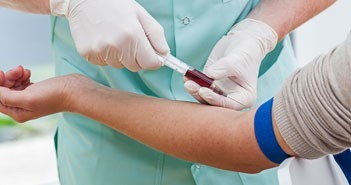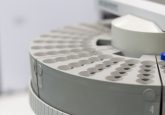Researchers in the USA identify proteins in urine that may act as diagnostic biomarkers for Kawasaki disease

Identification of potential biomarkers for difficult-to-diagnose Kawasaki disease.
Members of the Proteomics Center and the departments of Pathology and Rheumatology at Boston Children’s Hospital (MA, USA) recently announced the discovery of possible biomarkers for the diagnosis of Kawasaki disease. Although the disease is uncommon, prevalence is rising. The disease shows an ethnic bias, with incidence rates of 138, 17.1 and 8.1 for Japan, the USA and the UK, respectively.
People with Kawasaki disease experience inflamed blood vessels that may result in enlarged coronary arteries, which in turn has led to heart attacks in some cases. The disease may occur at any age but most frequently affects children under the age of 5 years.
Although highly treatable (80% of children only require one round of treatment) it is difficult to diagnose, as the symptoms are frequently mistaken for more common viral or bacterial infections. If left untreated, approximately 25% of children will go on to develop coronary artery aneurisms.
If validated, the set of proteins detected in urine by researchers may act as biomarkers for the disease, enabling an earlier diagnosis. Susan Kim, a rheumatologist with the Kawasaki Disease Program at the hospital, explains the need for “a test that we can use to proactively distinguish children with Kawasaki disease from those with other causes of fever” in order to begin treatment earlier. Currently, individuals with incomplete presentation of the disease may be misdiagnosed, or not diagnosed at all.
Alongside proteomics experts, Kim used mass spectrometry and enzyme-linked immunosorbant assays to screen the protein content of urine from patients with Kawasaki disease. 190 proteins that are only found in the urine of affected children were discovered, two of which proved to be 98% accurate when used to distinguish between Kawasaki disease and other, similar conditions. These proteins (filamin C and meprin A) are associated with injury to blood vessel and cardiac muscle cells and inflammation, while other associated markers are involved in immune activation and regulation, and pathogen recognition. Levels of filamin C and meprin A even tracked treatment response in the trial, which, although promising, requires further research before it can be used as the basis for a clinical-grade test.
Sources: A urine test for a rare and elusive disease; Kentsis A, Shulman, A, Ahmed, S et al. Urine proteomics for discovery of improved diagnostic markers of Kawasaki disease. EMBO Mol Med. doi: 10.1002/emmm.201201494 (2012) (Epub ahead of print).; Dillon M, Eleftheriou D, Brogan P. Medium-size-vessel vasculitis. Pediatr Nephrol. 25(9), 1641–1652 (2010).



